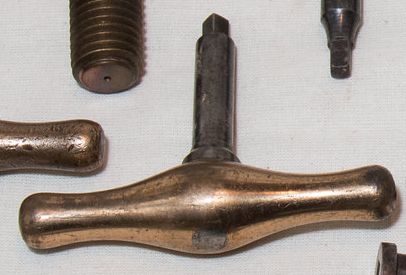We used to make carriage door handles at work by casting the brass around a steel spindle with suitable chunks chewed out of it to provide a positive drive and location. The pattern was "handle plus spindle"; the pattern was removed and a steel spindle carefully positioned and aligned in the mould. Very simple bearings on most older carriage door locks; just a 3/4"BSW thread to provide axial and radial bearing surfaces.
To veer off-topic slightly, the handles on the BR Mk.3 doors were interesting; initially they were stainless steel, threaded 3/4"BSW, but they suffered misalignment problems. Later ones were fitted with plain journal bearings attached to the lock. Fitting the lock-plus-handle assembly involved first wangling the handle through the hole in the door, before securing the lock on the inside of the door with screws. Early handles – a lever type – suffered from twisting, due to the massive inertia caused by the handles whipping when the door slammed. (It is a rack-and-pinion arrangement which gives a positive visual clue to the door not being latched shut.) We had to change the material to a heat-treated grade normally used for turbine blades. The balanced dickie-bow type on Mk.2 and earlier stock didn't suffer from the problem, and a lower-spec stainless could be used.
And don't ask me about providing inside handles to slam door locks on Mk.3 stock…
Mick B1.





